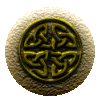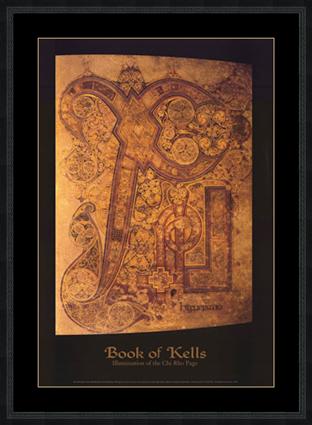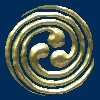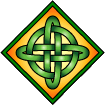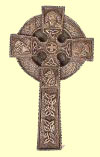|
Celtic SymbolsYou don't have to be of Irish ancestry to enjoy Fantasy-Ireland's Celtic symbols guide!
To knotwork and the sacred tree of life... The exquisite craft that is distinctively Celtic art calls the ancient spirits to all of our hearts. It somehow instinctively reminds all of us that we are eternally connected with the Cosmos and with every living thing on the Earth. Celtic symbols honor the spirit of the Irish, the Scottish, the Welsh, the British, and anyone with Celtic heritage. And even if you have no Celtic blood in your veins, if you honor Mother Earth and believe in the spiritual connection between all living things, then you definitely have a Celtic soul and should follow your heart. Understanding Celtic symbols isn't easy, though. There are generally two types of writing about Celtic symbolism. There are the academics, who are much more factual and accurate. But their writing tends to make for very dry reading and generally focus on the past. Then there are the authors who write with the masses in mind. They write about the modern, living tradition of Celtic art. Their words are for people who find Celtic symbolism mystical and inspiring. The thing to keep in mind when reading their work is that they are prone to abstract speculation and often perpetuate idealistic myths about the Celts, rather than the whole truth. When it comes to ascribing specific meaning to Celtic symbols, very little is certain. Since the ancient Celts didn't keep written records, it's difficult to know for sure what the symbols meant to them. Most of what we believe any particular Celtic symbol means is just pure speculation, based upon what scholars know of their culture. Click here to return to the TOP of the page
People from many lands herald Celtic designs as the emblem of their heritage because the people known as "Celts" lived in many areas of modern-day Europe. And most people have a particular design in mind when they envision Celtic designs. What most of us call Celtic symbols are actually the exquisite knotwork designs created by Irish Christian monks who were converting the pagan Celts to Christianity. Modern interpretation of Celtic knotwork symbols is mostly derived from the illuminated manuscripts like the Book of Kells, which were compiled by these Irish monks during the 6th and 7th centuries. Although their designs were influenced by Syrian and Coptic art, they added their own special touch and made it their own distinctively Irish art form. Click here to return to the TOP of the page Fantasy-Ireland's Guide to Celtic Symbols
Otherwise known as key and step patterns, they symbolize the journey we all take on the long and winding road of life. No matter who we are or where we live, we all face the same challenging path full of open doors as well as obstacles. To learn more about these ancient Celtic symbols, read Celtic Design: Maze Patterns by Aidan Meehan. You can learn all about the origins of Celtic Maze Patterns, and even how to draw them if you like! In fact, Aidan Meehan's Celtic Design Series, available in our Celtic art resources, offers the aspiring Celtic artist not only the history and meanings of many Celtic symbols, but also step-by-step instructions for creating your own designs.
These mythical spirals are among the oldest symbols associated with Celtic art. They are believed to represent the spiritual balance between inner and outer consciousness...and much, much more. Celtic Animal Symbols Celtic Dragons: Mythical Power Source
The richly layered beauty of knotwork is the most identifiable type of Celtic art and artistry. The mystique of Celtic knot symbolism lies in the complex interlacing of unbroken lines. The interwoven, endless patterns compel all who gaze upon them to ascribe Celtic knotwork meaning and purpose. The Celtic knot is not only beautiful....For many, it symbolizes eternity: the eternity of life, the eternity of nature, and the eternity of love. The Sacred Celtic Tree of Life They are among the most cherished Celtic symbols in all of Ireland. Countless carved stone High Crosses have dotted the Irish landscape through the ages. They are another emblem of the ancient premise, "As above, so below..." This beloved Celtic symbol is also the definitive emblem of the unique evolution of the faith of the Irish people. Find out why the Celtic Cross symbolizes the peaceful union of Druid and Christian worlds and why it signifies so many other profound and sacred truths.... For further research, don't miss our recommended Celtic Art Resources! Everything we share with you about Celtic symbols, we couldn't have done without what they shared with us. From clip art and tattoos to art history scholars, you'll save time and learn much more using our list of the best Celtic art resources both online and off! Click here to return to the TOP of the page Click here for our Irish Symbols Guide Return to the Irish Celtic Symbols Guide |

Fantasy Ireland is created by
Deborah A. Felker
and is licensed under a
Creative Commons Attribution-ShareAlike 3.0 Unported License.
For permissions beyond the scope
of this license contact the author.





